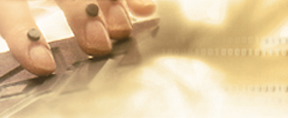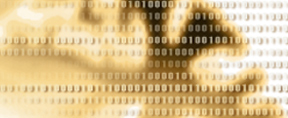Haptic perception: an historic approach
Traditional perceptions of the sense of touch
The idea that perception or sensation may be localised in certain physical organs (e.g., skin) has a long tradition. It pervades many cultures. The system of sensory physiology (of which touch is one important element) is shaped by the influence of both medical thought and the philosophy of nature. Let us turn first to ancient Indian medicine or natural philosophy, as it appears in the Vedas. The Vedas are the most ancient Indian religious texts and consist for the most part of hymns, liturgical chants, sacrificial formulas and magic spells. The Rgveda, the oldest of the vedic texts, has not yet a verb for ‘touch’ or ‘feel’ and no expression for the corresponding sensation which – in a later text entitled Atharvaveda – is called sam-sparsa (feeling) [1]. In the Ayurveda, which forms an appendix to the Atharvaveda, the primeval matter (sattva) acts upon the fives senses of knowledge or buddhι-ndrι-ya (hearing, touch, sight, taste, smell – Fig. 1). The sense of touch is associated with the wind, one of the five elements in ancient Indian philosophy. The skin, as one of the sense organs, is envisaged simply as the meeting point of the qualities or object assigned to this sense: skin – finger – grasping – feeling.
In ancient China, too, the human organism was perceived as a miniature copy of the universe. The doctrine of the five elements or the five phases of transformation is the basis of the idea that there are many numerical correspondences between nature and the human body (Fig. 2).
The sense of touch thus plays an important role in Chinese pulse diagnostics, e.g., in a classical text entitled ‘Seven sorts of Pulses which indicate danger of Death’ (dating back to the 3rd century AD). The metaphors used in describing these pulses concern tactile perception, for example: “If the Motion of the Pulse resembles the hasty pecking of the Beak of a Bird, there is a failure of Spirits in the Stomach: one may also conclude that the Heart performs its Functions but ill, and that the Blood is in no good condition” [2]. Other descriptions of dangerous pulses do not refer to a primarily tactile perception, although some figurative comparisons may be explained by a tactile experience of sensing distinctive ‘pulses’. According to Elisabeth Hsu these descriptions do not solely express the physicians’ tactile experiences but are part and parcel of a more general familiarity with tactile perception.
...
<link>contents «Human Haptic Perception», Grunwald (Ed.)
<link>« Preface
<link>» German pioneers of research into human haptic perception
<link>references: Haptic perception: an historic approach
<link>references: chapters, <link>all





